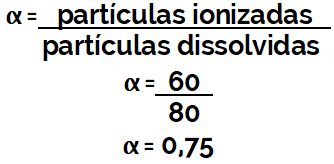THE Golden Law, or Imperial Law number 3353, was the law that extinguished slavery in Brazil. The bill of this law (whose original text can be seen in the opening image of this text) was prepared and presented to the Imperial Brazilian Senate by the senator Rodrigo Augusto da Silva, on May 11, 1888. The senators' vote was quick and, two days later, the law was sanctioned for the Princess Isabel, who exercised, at the time, the function of Princess Regent, since his father, the emperor D. Pedro II, was out of the country to take care of his health.
Abolition context
The 1880s were turbulent for the reign of Pedro II. Much of the urban population, made up of liberal professionals (doctors, journalists, lawyers), was in favor of abolition and many of its members were directly engaged in the cause. abolitionist. The emperor himself was also against the slave regime, but he had never achieved political articulation. necessary for abolition to occur, despite the great pressure that liberal deputies exerted on their government.
Three years before the Lei Áurea, the Empire had sanctioned another law, number 3270, of September 28, 1885. This law made all slaves over the age of sixty free and, therefore, it became known as Sexagenarian Law. This was the last measure the Empire took regarding the situation of slaves before the Golden Law.
Added to the end of the slave trade (1850) and the prohibition to keep children born of slaves captive (1871), the Sexagenarian Law advanced a little on the ground claimed by abolitionists and liberal politicians, but it left the slavocratic planters increasingly unhappy with the Empire. Furthermore, there was no planning by the State for economic and social assimilation of the mass of freed blacks.
From 1885 to 1888, the situation in cities and even on some farms began to get even more turbulent, given the frequent actions of escapes of slaves, supported by abolitionist associations, as highlighted by historian José Murilo de Carvalho, in his biographical profile of Dom Pedro II:
“The abolitionist tide became irresistible, becoming the first major national movement of public opinion. Not even the farms escaped. In São Paulo, an abolitionist group called 'caiphases' promoted slave escapes. Leaks multiplied, especially in the provinces of São Paulo and Rio de Janeiro. The number of quilombos grew, some sponsored by abolitionists, such as Leblon, in the capital of the Empire”. [1]
This “abolitionist tide”, combined with the regency of Princess Isabel, in the period 1887-1888, definitively led to abolition.
Princess Isabel's Singularity
In 1887, severely affected by diabetes, D. Pedro II traveled to Europe to start a treatment. THEPrincess Isabel, who was in Europe, was called back to the country by the imperial cabinet. In Brazil, the princess assumed the regency and started to govern in her father's place. The theme of abolition was the order of the day and, for the most part, there was a somewhat revolutionary atmosphere in the streets, with the action of groups like the “caifas”.
Do not stop now... There's more after the advertising ;)
Isabel, unlike the time of the law of the free womb (1871), also sanctioned by her, was more engaged in the abolitionist cause. She even had direct contact with some leaders, especially with AndrewReeds. In addition, the princess also went so far as to accommodate, with the help of Rebouças, many escaped slaves inside the Imperial Palace itself, a fact that scandalized the members of the court.
One of the main political maneuvers taken by the princess was the change of the head of the executive branch, the Baron of Cotegipe, per João Alfredo. Both were conservatives, but Cotegipe, unlike Alfredo, did not pursue the Princess Regent's demands with the ministers. The main one concerned precisely the proposal for abolition, which Cotegipe deemed impertinent. The Baron was removed by Isabel in March 1888. Over the next two months, the Lei Áurea project was articulated.
Law text
The text of the Lei Áurea was signed by Princess Isabel and Rodrigo Augusto da Silva with a golden pen, studded with diamonds and red stones. There are only two short articles in the body of the text. See in full:
The Imperial Princess Regent, on behalf of His Majesty the Emperor, Mr. D. Pedro II, makes known to all subjects of the Empire that the General Assembly decreed and it sanctioned the following law:
Art. 1°: Slavery in Brazil is declared extinct from the date of this law.
Art. 2°: The contrary provisions are revoked.
It orders, therefore, to all authorities, to whom the knowledge and execution of the aforementioned Law belongs, to comply with it, and to enforce and keep it as fully as contained in it.
repercussions
With the sanction of the Law, the princess was publicly acclaimed by the abolitionists. Even republicans like José do Sponsorship, they praised the noble gesture of the heiress to the Brazilian throne. But, as historian José Murilo de Carvalho says, if the princess:
“[...] calculated to accumulate credits for a third reign, he was completely wrong. Without a doubt, she won wide popular support, reflected in the great festivities of May 13 and in the title of Redeemer given to her by José do Patrocínio. Without discussing the real weight of his contribution to the Lei Áurea, it is certain that the popular imagination registered the title, which still resists attempts to demoralize it. But popular support played no role in the final crisis of the regime.” [2]
The imperial regime was worn out. In addition to the slave-owning agrarian elites who revolted with abolition, many republicans also opposed it to the amazement of men like José do Patrocínio and Luiz Gama. Thus, despite her acquired popularity, Isabel could not, with her image, reverse what was already on the way: the fall of the Empire and the Proclamation of the Republic, which occurred the following year.
GRADES
[1] CARVALHO, José Murilo de. D. Peter II. São Paulo: Companhia das Letras, 2007.pp. 190-91.
[2]Idem. P. 193.
By Me. Cláudio Fernandes



